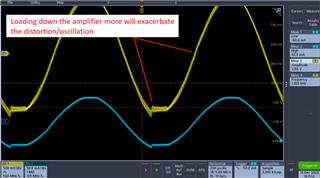Other Parts Discussed in Thread: OPA192, OPA205
Hello –
I’m working on a design using the OPA189 where from time to time the output may unintentionally get loaded down aggressively, taking the OPA189 into its current limit. I’ve run into some issues where I see transient spikes (on all nodes, V+,V-,Vout) as the device enters and exits that overcurrent state. Is this a byproduct of the chopper blocks internal to the OP189? Related to section 8.3.3 of the datasheet, Input Bias Current Clock Feedthrough?
Just so I’m clear with a direct question – what is the expected behavior of the OP189 when it’s taken into it’s current limit? When it enters or exits from a shorted output condition?
I don’t see these transient spikes when I simulate the same network and conditions using the OPA192. Is there another amplifier that could be recommended? I’d like to have a network that is able to withstand a shorted output, with minimal additional spiking transients if possible.
My design is similar to this –









